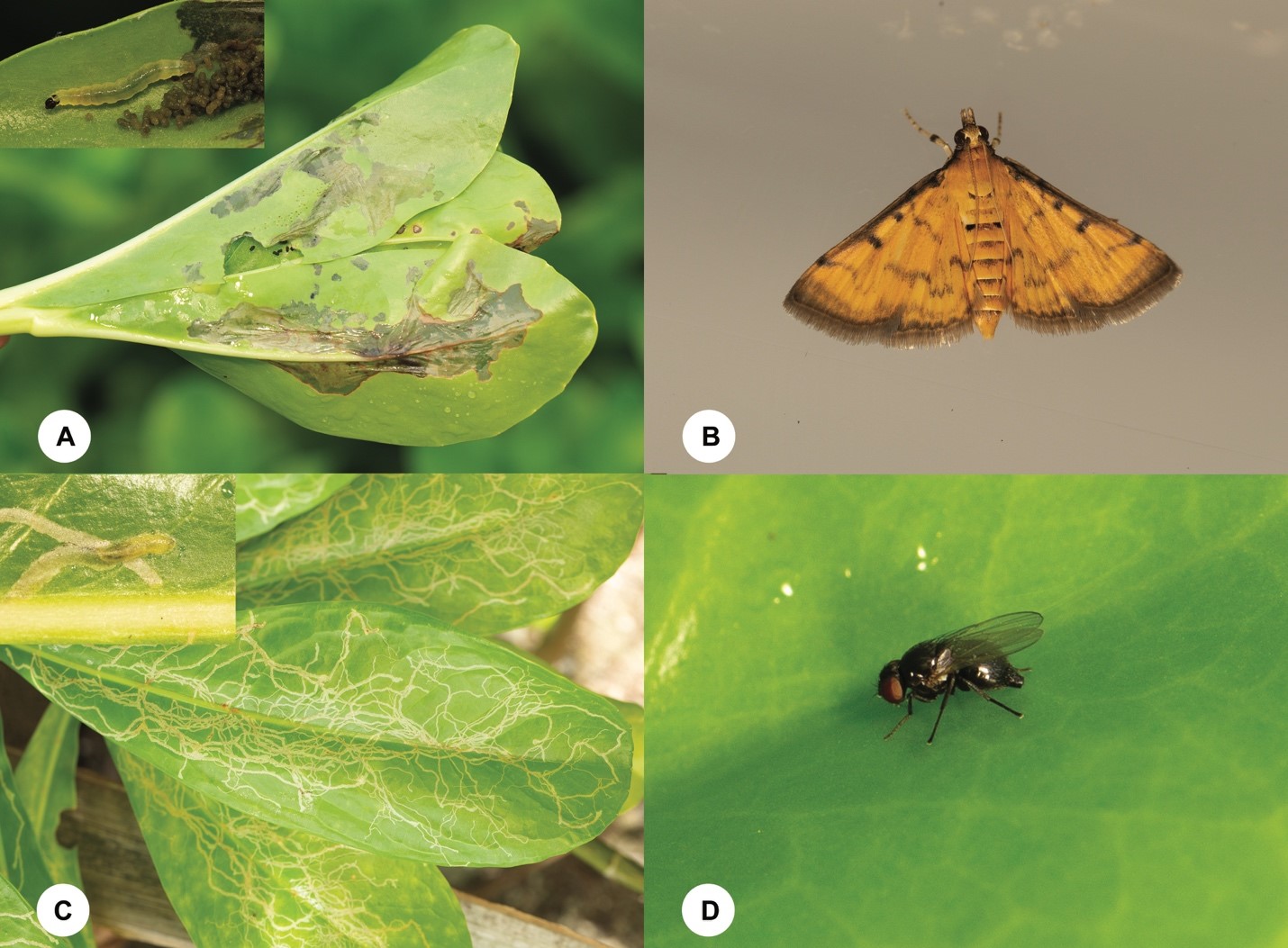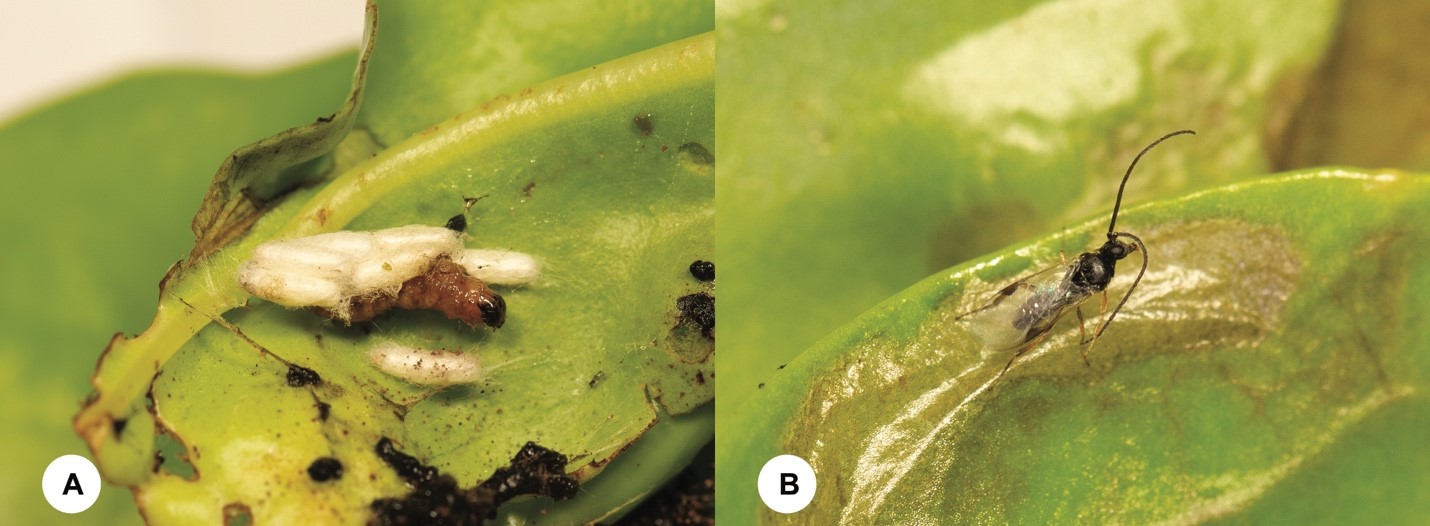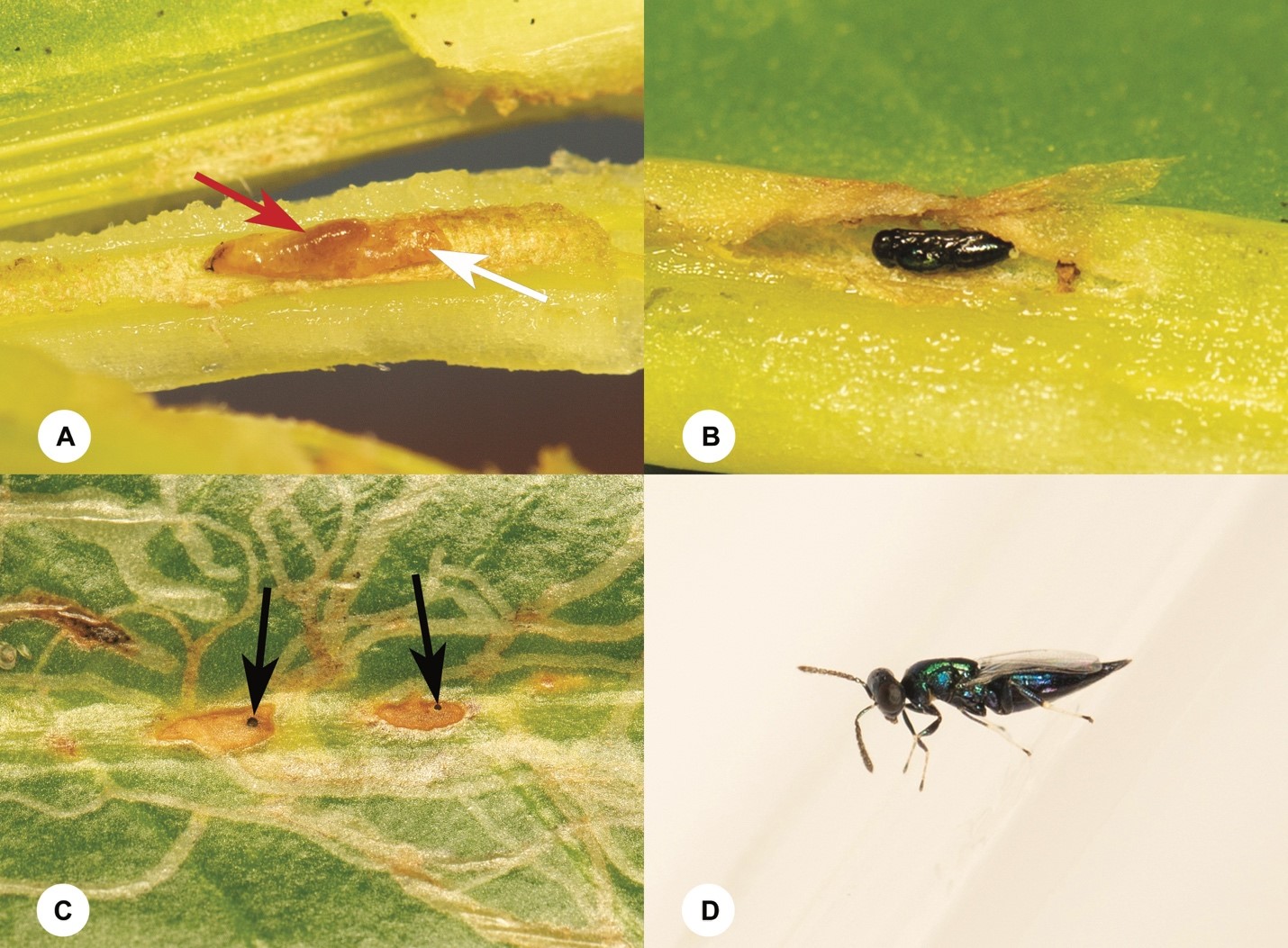Two parasitoid species found as promising biological control agents against insect pests feeding on Scaevola taccada
The beach naupaka, Scaevola taccada, is an important evergreen shrub on the islands in the South China Sea because it is one of the most common plant species inhabiting those small islands and plays an important role in vegetation restoration. However, the growth of this shrub on islands in the South China Sea has been seriously damaged by a few insect pests, including a leaf borer Herpetogramma submarginale (Lepidoptera, Crambidae) and a leafminer Ophiomyia scaevolana (Diptera, Agromyzidae) (Figure 1). Leaves damaged by H. submarginale wilted, which can lead to the death of branches. Badly infested leaves by O. scaevolana became yellow and dropped off the plants. The growth of some S. taccada trees are seriously affected by these two pests. Given the importance of S. taccada in the vegetation restoration on islands and the vulnerable environment of those islands, sustainable pest management strategies, such as biological control using natural enemies, should be a favorable and cost-effective option. However, natural enemies of insect pests infesting S. taccada have not been investigated, nor have the application of natural enemies in the biological control against S. taccada pests.
In a new study published in the jounal Insects, a research group led by Dr. CHEN Huayan of South China Botanical Garden, Chinese Academy of Sciences, found that two parasitoid species have great potential to be used as biological control agents againts the two main pests of S. taccada.
During an expedition to Yongxing Island to survey natural enemies of insect pests, researchers found that a gregarious braconid wasp named Dolichogenidea stantoni attacks the larva of H. submarginale and contributes an average 48.9% parasitism rate on H. submarginale. While the larva of O. scaevolana are attacked by two solitary wasp, namely Opius biroi and Euderus albitarsis, with a respective 5.8% and 64.4% parasitism rate on O. scaevolana. “With high parasitism rates on their hosts, D. stantoni and E. albitarsis are promising biological control agents against insect pests feeding on S. taccada, further studies on the biological characteristics of these two parasitoid species are required to explore the possible application of them in biocontrol programs”, the reserachers concluded. The article link is: http://doi.org/10.3390/insects15120926

Figure 1. The two main insect pests of the beach naupaka.(Image by CHEN et al)

Figure 2. Dolichogenidea stantoni.(Image by CHEN et al)

Figure 3. Euderus albitarsis (Zetterstedt).(Image by CHEN et al)
File Download: